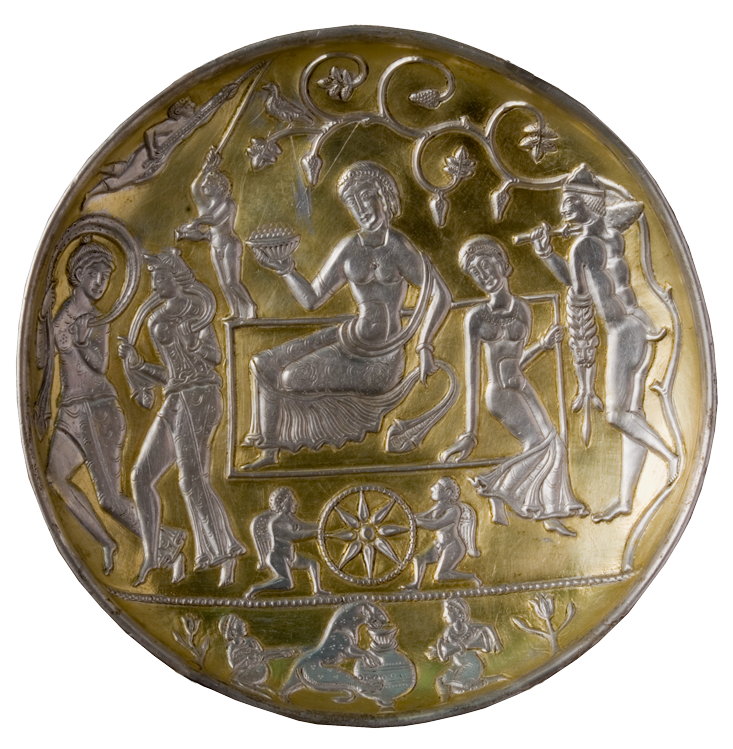Plate depicting Dionysian scene

On the plate’s front side in a technique of a high relief a many-figured composition is showed. In the middle on a carpet two sitting women figures are depicted. One of them has a cup with grapes in her arm. On the right side this composition is limited with bending grape-vine with a bird on it. A satyr in the form of a beardless man with a tail and a panther’s skin in his hand leaned on the trunk of the grape-vine. On the left two dancing women’s figures are depicted, a naked young man is over them with a pitcher doing a libation in one hand, and the pole and a rope in another. Another young man, an acrobat, is holding on this rope. In the lower part of the composition in the middle are depicted a wheel with two winged young men- Eros by its sides. Lower in the middle a cheetah with a pitcher and musicians on both sides are shown. This is a scene of a celebratory feast dedicated to the ancient Greek god of winegrowing, wine and merriment Dionysus, who was worshiped all over the Hellenic world up to India after the expedition of Alexander the Great into Asia. But according to details of the image (shape of headdresses, elements of the ornament, representation of clothing), the plate is referred to the much later period. Probable places where it was crafted are Iran of the Sasanian period (III-VII centuries) or one of areas of the Middle Asia that was influenced by Hellenic culture.
Exhibit’s purpose of use – a prestigious item, ceremonial vessel. The question how they were brought to this territory is still discussed. Part of these items could be a gift of Byzantium court for the service in fight with Iran, other items of value were meant as a ransom for noble captives or marked the northern branch of the Silk Route.
Uniqueness. In Perm area and Cisurals an ample quantity of golden and silver objects of byzantine, Iranian and Middle Asia work of the early middle ages were found.
